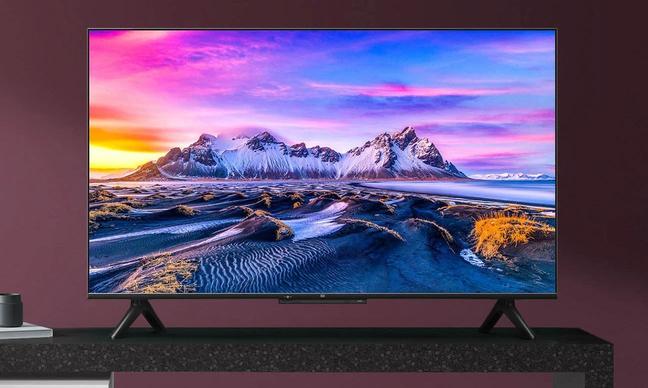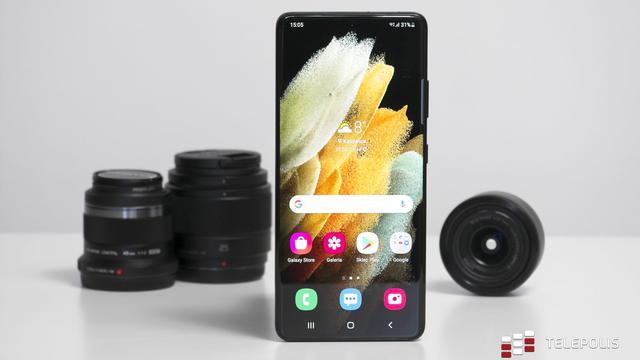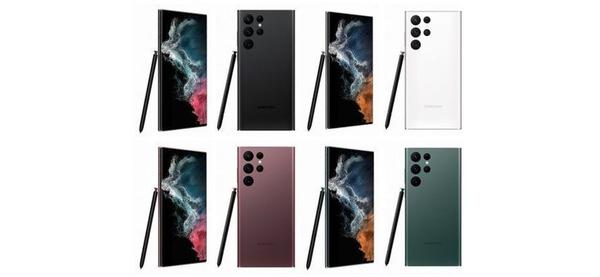Xiaomi Mi LED TV P1 (L55M6-6AEU) - what are we dealing with?
Foto: XiaomiXiaomi L55M6-6AEU - domyślnie telewizor ustawiamy na parze nóżek, ale można sprzęt też powiesić na opcjonalnym mocowaniu naściennymThe equipment that reached our editorial office is a typical representative of modern liquid crystal TVs (LCD).The manufacturer in the official specification does not provide exactly the type of matrix used in this device, but based on the test results we obtain (with a lot of certainty) that it is a LCD VA panel with direct LED backlight.The panel is clocked at 50/60 Hz - typical for budget class TVs, is it bad?No, it is difficult to expect for the amount of PLN 2,500 of the TV with a real, 100-herte matrix.
Xiaomi Mi LED TV P1 (L55M6-6AEU) - Android TV, pilot and voice
Foto: Marek Kowalski / komputerswiat.plXiaomi Mi LED TV P1 - interfejs Android TVServing the equipment of the popular Chinese brand is simple because the manufacturer has decided to use Android TV as a software that supports Smart TV functions of this TV.The approach is the most right, because Android is difficult to accuse illegibility or difficulty in use.An additional advantage of Xiaomi equipment is also the Polish -language service (finally!) Google assistant.In this respect, it is a novelty, because so far an assistant understanding our speech has basically performed only on smartphones.So we can also use it on the TV.This is a good approach because the user's speech recognition has no problem.Attention!The TV has a constantly active microphone.If you do not want a permanent "listening" of your life through artificial intelligence, it can be easily turned off - the appropriate switch is placed in the bottom frame of the tested TV.
Foto: Marek Kowalski / komputerswiat.plXiaomi Mi LED TV P1 - pilot o dość klasycznym wzornictwieXiaomi did not combine too much with a remote control, deciding on a construction with classic design and such action.The remote control is powered by AAA battery (so -called.small fingers).On the remote control you will find buttons for the most important, according to the manufacturer of stream services (Netflix and Amazon Prime Video), there is also the "home" Android TV button, as well as the original Xiaomi overlay called Patchwall.The problem is that after trying to run it on the TV we saw the message "Patchwall is not available in your country or region now...".It is difficult, at least there is an Android TV with a working Polish -language Google assistant, which makes it easier for us to search for audiovisual content from any resources to which the TV has access at the moment.Of course, the operation of the assistant depends on the internet connection, but in this respect Xiaomi has prepared the equipment well.The TV supports all WiFi and Bluetooth ranges.Ruter owners can also connect the TV to your home network with an Ethernet cable.
Xiaomi Mi LED TV P1 (L55M6-6AEU) - image quality
Foto: Marek Kowalski / komputerswiat.plXiaomi Mi LED TV P1 - jakość obrazuThe subjective reception of the image from a good quality source is decent.The TV thanks to the MEMC technique can liquefy playback, but although for a layman the colors may seem nice to the eye, after watching a few test video clips I had doubts about the actual color palette of this model actually a very wide palette.However, let's give a "voice" to the subjective feelings and emotions of measuring devices from our editorial laboratory.

Xiaomi Mi LED TV P1 (L55M6-6AEU) - Luminance
Foto: komputerswiat.plXiaomi L55M6-6AEU - krzywa luminancjiThe luminance curve of the tested TV not only deviates a bit from the reference curve, but also has a fairly irregular shape.Remember, however, that we are dealing with a TV and virtually every manufacturer uses some brightness control mechanisms.The TV can, for example,.Detect and adapt image brightness depending on external lighting, although we turned off this function before the measurement, but as you can see the algorithms sewn on the Xiaomi TV "know better".In the default operating mode (with the offside of energy -saving functions, which we had to give up due to their impact on measurements) the TV is quite bright.The level of white luminance we measure is 361 cd/m2 - a lot for an SDR signal and the fact that we are dealing with TV.Also, the level of static contrast surprised us pleasantly.The measured Ansi static contrast is 7049: 1.For comparison, for most LCD VA matrices, a level of 5000: 1 is expected to emit a contrasting image.However, he lacks a lot for OLED screens or even a mini LED.But also remember what price shelf we are talking about here.How about the brightness with the HDR signal?Well...Basically the same.In the HDR material, we measured the maximum white brightness of 362.3 cd/m2, which is basically identical to the SDR image.Because in the case of HDR materials on the perception of the extended tonal range, it is difficult to talk about the real HDR image in the case of this TV - the brightness in HDR modes is simply too low.Yes, the algorithms change the image a bit, but we do not fool physics, we will not conjure up the light of magic light.
Xiaomi Mi LED TV P1 (L55M6-6AEU) - colors
I would like to remind you - Xiaomi in itsmarketing materials promises a wide range of colors, declaring the TV's ability to display over a billion colors (10 -bit coded color).However...marketing.First, the matrix used on this TV is not de facto 10-bit.Real processing of color information is done by 8-bit + FRC method.What does it mean?I will explain briefly.The panel, in fact, codes 8-bit (i.e. for each of the basic colors we have 256 shades, not 1024 as in the case of real 10-bit panels), while the colors that are not covered by the eight-bit color coding space are obtained by FRC technique (Frame Rate Control).In short, this is that in order to get a color from outside the 8-bit range, the color of a given pixel is made of two color-reaching color matrix by a very fast flicker.You can cheat the human eye, but measuring equipment?Unfortunately, no gamut chart (spectrum of achievable colors) perfectly shows:
Foto: komputerswiat.plXiaomi L55M6-6AEU - gamut względem DCI-P3A gray, larger triangle in the above chart is the DCI-P3 color space, when the triangular range is the colors actually emitted by the tested equipment.What is the actual color covering?Much lower than the manufacturer's declaration.The TV actually covers the cinematographic color space DCI-P3 in just 66.2 percent.The SRGB (basic) palette is covered in 90.7 percent.A bit missing to the announced "up to 94% dci-p3" right?Simply, the colors outside the actual range simulates thanks to the FRC technique.The effect is desirable for a layman - the image seems very colorful, and..."Since there is no difference, why overpay?".However, the declared DCI-P3 coverage in 94 percent.In this case, it is a certain bend of the facts - gently speaking.
And how with loyalty of colors?Well, typically television, let's see for the next chart:
Foto: komputerswiat.plXiaomi L55M6-6AEU - wierność kolorystyczna fabrycznieThe average Delta E error in the tested TV (in the default operation mode) is 2.83 and the maximum (for light gray color) is 5.73.This is a good result for a TV, many models in this price class are much more falsified.
As for the color temperature, the television traditionally emits heavily stamped white (the measured color temperature of the white is 9724 K by default).
Xiaomi Mi LED TV P1 (L55M6-6AEU) - summary - easy to use equipment, but not for image quality purists
Foto: komputerswiat.plXiaomi Mi LED TV P1 - obraz wygląda efektownie, ale szeroki zakres barw opiera się na sztuczce oszukującej zmysłyThe biggest advantage of the Xiaomi TV is the price and simplicity of use (not without shortcomings, because the lack of a patchwall overlapping over the initial configuration spoils the good impression).However konsekwencja decyzji Xiaomi by wybrać jako system Smart TV Androida TV.The subjective reception of the image from various sources is decent, the speed of Smart TV is also not objected.And that the TV does not display such a wide palette...Well, it's equipment of a rather cheaper class, not a premium model that you have to demand from, because we pay more for it.Xiaomi has prepared a TV for customers who do not cycle image quality, they simply care about easy -to -use TV, this condition Chinese equipment meets.
Competition?At first, the TCL 55C715K TV tested earlier is coming - it is also equipment available at a similar price, the same size (55 ") and offering a noticeably wider color palette and also operated with Android TV (although when we tested it - morewithout Google assistant understanding the Polish language).I am referring to this test.
Below you can check the current prices of the hero of this article and his competition:


